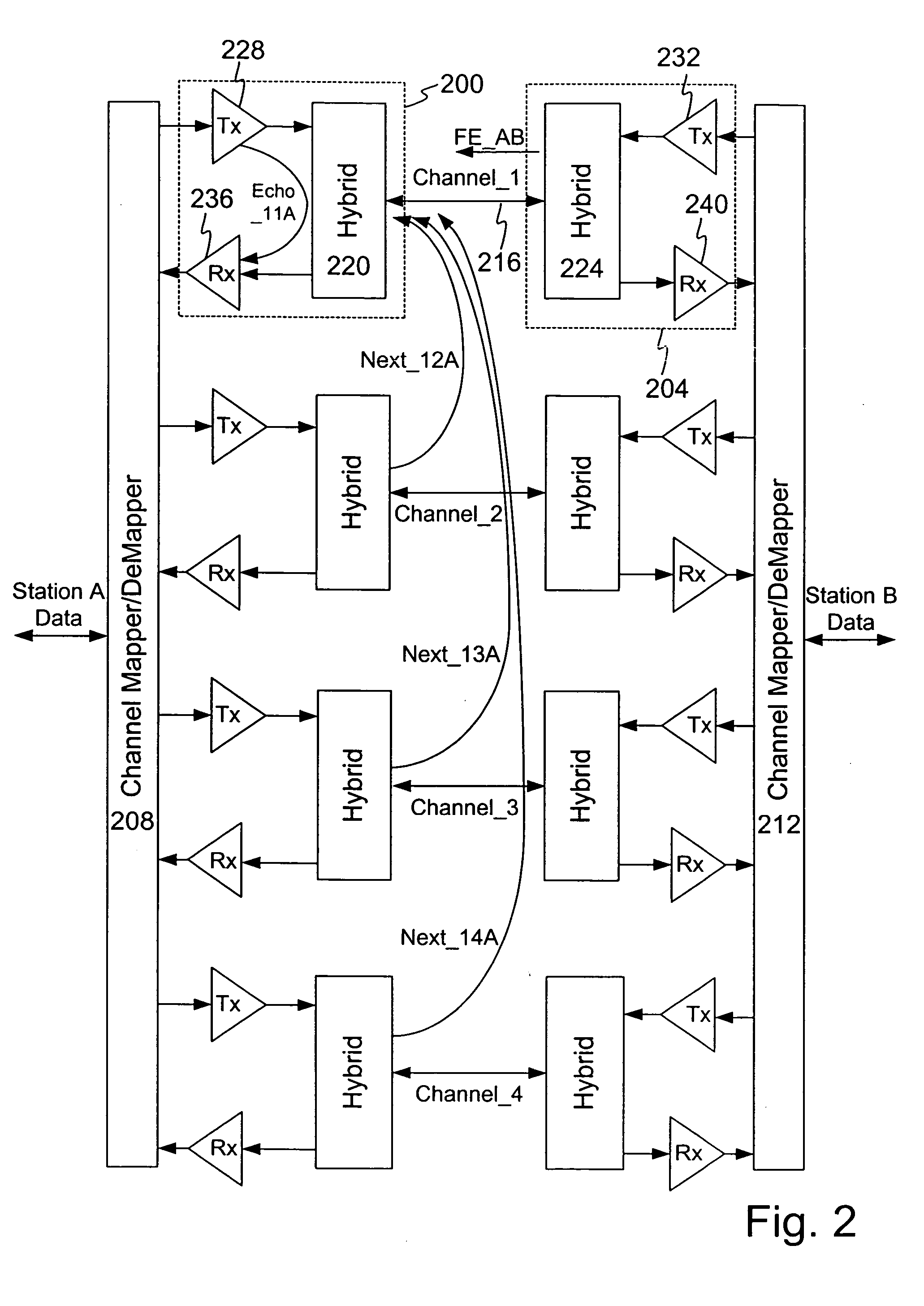Multiple channel interference cancellation
a multi-channel and interference cancellation technology, applied in the field of electronic communications, can solve the problems of limiting the detection of the far end signal, multi-channel communication link coupling, system drawbacks, etc., and achieve the effects of reducing complexity and reducing or eliminating crosstalk, coupling or echo
- Summary
- Abstract
- Description
- Claims
- Application Information
AI Technical Summary
Benefits of technology
Problems solved by technology
Method used
Image
Examples
Embodiment Construction
[0055]FIG. 2 illustrates the sources of interference into receiver 1 of station A. As shown, a first transceiver 200 is configured to communicate with a second transceiver 204. The first transceiver is associated with station A while the second transceiver is associated with station B. It is contemplated that the transceivers 200, 204 are incorporated within communication devices configured to communicate utilizing a multi-channel communication link. For purposes of understanding, the transceivers may connect to mapper / demapper modules 208, 212 as shown. Although shown as having four communication channels, it is contemplated that the method and apparatus discussed below may be expanded to any number of channels. In addition, the term channel should be understood to mean any medium capable of carrying a signal or data, such as but not limited to, any Category twisted pair (UTP) cabling either shielded or unshielded (e.g., 5, 5e, 6, 7 . . . etc.), wireless channels, fiber optic chann...
PUM
 Login to View More
Login to View More Abstract
Description
Claims
Application Information
 Login to View More
Login to View More - R&D
- Intellectual Property
- Life Sciences
- Materials
- Tech Scout
- Unparalleled Data Quality
- Higher Quality Content
- 60% Fewer Hallucinations
Browse by: Latest US Patents, China's latest patents, Technical Efficacy Thesaurus, Application Domain, Technology Topic, Popular Technical Reports.
© 2025 PatSnap. All rights reserved.Legal|Privacy policy|Modern Slavery Act Transparency Statement|Sitemap|About US| Contact US: help@patsnap.com



